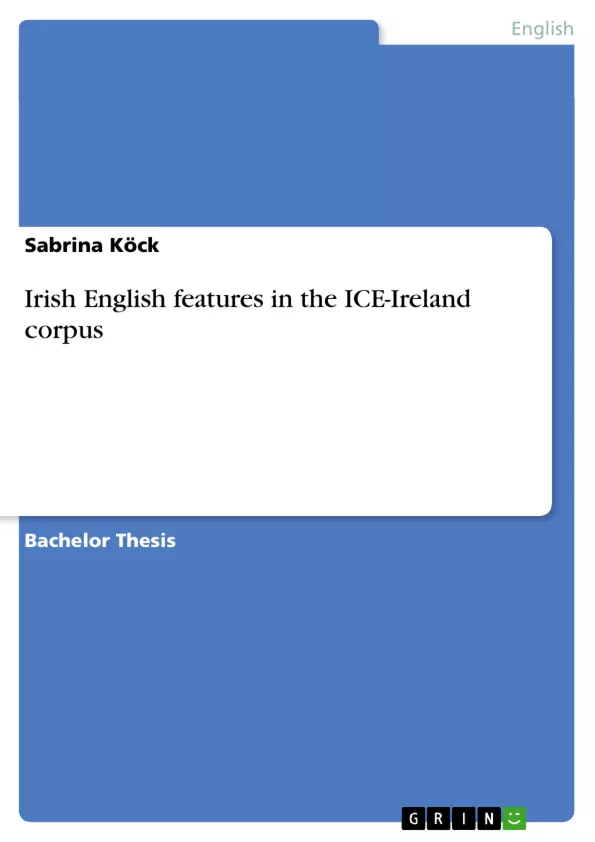It can be suggested that the distinctive features of Irish English stem from, basically, three major sources: (1) Archaic (British) English input, (2) transfer and contact from Irish and Scottish and (3) independent developments (see below). Surely, colloquial usage shows clear traces of these three sources. Therefore, the question asked in this paper is whether or not this distinctive character, which is reflected in colloquial usage, can also be observed in Standard Irish English or if basically, Standard Irish English equals Standard British English. Thus, several selected features which are traditionally ascribed to Irish English will be presented. These features will then be examined with respect to their frequency, usage and distribution in Standard Irish English. “Distribution” refers to both the occurrence in certain discourse types and registers (written/spoken, formal/informal), but also the proportioning of features in Northern Ireland and the Republic of Ireland. Afterwards, the results will be compared with British English standard usage. For this purpose, the Irish (divided into Northern Ireland/ ICE-NI and the Republic of Ireland/ICE-ROI) and the British component of the International Corpus of English will be used.
Inhaltsverzeichnis (Table of Contents)
- Introduction: The status of English in Ireland
- Irish English features in the ICE-Ireland corpus
- Preliminary remarks
- Overview of possible sources for Irish English features
- The notion of Standard English: Old and new
- Analytic procedure
- Archaic English input
- Adjectives
- Bold - ICE Ireland
- Adjectives
- Preliminary remarks
Zielsetzung und Themenschwerpunkte (Objectives and Key Themes)
This paper investigates the distinctive features of Standard Irish English, focusing on whether these features are present in formal contexts or if they are primarily confined to colloquial usage. The main objective is to analyze the influence of various sources on Irish English, including archaic British English, transfer and contact from Irish and Scottish Gaelic, and independent developments.
- The status of Standard English in Ireland
- The impact of archaic British English on Irish English
- The influence of Irish and Scottish Gaelic on Irish English
- Independent developments in Irish English
- The distinction between Standard Irish English and Standard British English
Zusammenfassung der Kapitel (Chapter Summaries)
The introduction discusses the historical context of English in Ireland and the lack of a codified standard for Irish English. It examines the reasons behind this absence, including the emphasis on Irish as a marker of national identity. The paper also introduces the concept of Standard Language and its evolution.
Chapter 2 explores the various sources of distinctive Irish English features, including archaic British English, transfer and contact from Irish and Scottish Gaelic, and independent developments. The chapter also outlines the analytical procedures used in the study and the dictionaries consulted.
Chapter 2.2, focusing on archaic English input, presents an analysis of the adjective "bold" as an example of archaism surviving in Irish English. The chapter examines the word's usage in Irish English and its possible origins, drawing on dictionary definitions and corpus examples.
Schlüsselwörter (Keywords)
This paper focuses on the concept of Standard Irish English, its distinctive features, and their origins. Key terms include archaic English input, transfer and contact features, independent developments, corpus linguistics, and the International Corpus of English (ICE).
- Citation du texte
- Sabrina Köck (Auteur), 2013, Irish English features in the ICE-Ireland corpus, Munich, GRIN Verlag, https://www.grin.com/document/270162



